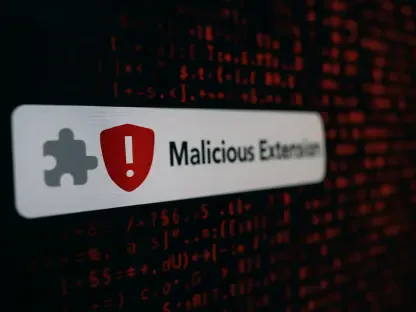How Can “Start Left” Improve Security and Zero Trust Practices?
As digital threats grow in frequency and complexity, traditional reactive security measures are proving insufficient for modern organizations. A new security paradigm is emerging—one that is proactive, people-centered, and integrated directly into the design and development stages of software. This article explores the shift from “shift left” to “start left” security practices, emphasizing the importance of building a security-centric culture from the ground up. By aligning these practices with Zero Trust Architecture (ZTA) principles, organizations can ensure continuous verification and assume that threats exist both internally and externally.
Proactive Security Approach
Embedding Security Early
Traditional security methods are often reactive, addressing issues only at the end of the software development life cycle (SDLC). The “start left” strategy advocates embedding security from the earliest stages of development, focusing on training and building security awareness among all team members. By integrating security measures early, developers are more likely to identify potential vulnerabilities during the initial coding stages, rather than patching issues post-deployment. This proactive approach ensures that security is not an afterthought but a fundamental component of the development process.
Additionally, embedding security early allows for the seamless integration of security tools and processes. Automated testing and continuous integration/continuous delivery (CI/CD) pipelines can include security checks that align with development workflows. This integration helps detect and mitigate vulnerabilities before they become significant problems, saving organizations both time and resources. As a result, the overall efficacy of the development process improves, reinforcing a security-first mindset that permeates the entire lifecycle of software development.
Training and Awareness
By integrating security training and awareness programs from the beginning, organizations can cultivate a security-first mindset among developers. This involves regular training sessions, workshops, and incorporating security best practices into daily routines. Security training should cover a wide range of topics, from basic principles to advanced threat detection techniques, ensuring that all team members, regardless of experience level, are well-versed in maintaining a secure development environment.
The goal is to make security a natural part of the development process, reducing the likelihood of vulnerabilities and enhancing overall security posture. This continuous training approach fosters an environment where developers are not only equipped to identify and address security issues but are also motivated to do so. When security becomes a shared responsibility across an organization, the quality and resilience of software development significantly increase.
Zero Trust Principles
Continuous Verification
The “start left” approach is well-aligned with Zero Trust Architecture principles that emphasize continuous verification. This means that no entity—inside or outside the organization—should be inherently trusted. Every access request is thoroughly vetted, and security measures are applied consistently throughout the development process. Continuous verification demands that security protocols and checks be implemented at various stages of the SDLC, allowing organizations to detect anomalies and potential threats early on.
This continuous validation helps in identifying and mitigating threats early. Regular and rigorous access checks can prevent unauthorized access, data breaches, and other cyber threats that could compromise the integrity of a project. By embedding these verification processes early and maintaining them throughout the lifecycle, organizations can create a robust security framework that is capable of adapting to the evolving threat landscape.
Comprehensive Safety Measures
Implementing comprehensive safety measures at every development stage is crucial for maintaining a secure environment. This includes regular code reviews, automated security testing, and real-time monitoring. Code reviews should be part of the regular development cycle, ensuring that each piece of code is evaluated for potential security issues. Automated security testing tools can scan codebases for known vulnerabilities, providing immediate feedback to developers and allowing them to address issues swiftly.
Real-time monitoring adds another layer of security, enabling organizations to detect and respond to threats promptly. By adopting these practices, organizations can ensure that security is maintained throughout the SDLC, aligning with Zero Trust principles and reducing the risk of breaches. The combination of continuous verification and comprehensive safety measures creates a resilient security infrastructure, capable of withstanding sophisticated cyber threats.
People-Centric Security
Cultivating Security Expertise
Moving beyond the traditional tool-centric model, the focus shifts to the people involved in the development process. This involves cultivating security expertise within development teams, ensuring security is not an afterthought but a core element during product development. Frameworks like the Cybersecurity and Infrastructure Security Agency (CISA) “Secure by Design” and the NIST Secure Software Development Framework (SSDF) support this approach by providing structured guidelines for security integration in development practices.
By investing in the development of security expertise, organizations can create a culture where security is deeply ingrained in every aspect of the software development process. This expertise not only empowers developers to write secure code but also equips them with the knowledge to anticipate potential threats and respond effectively. Encouraging collaboration between security and development teams further enhances this integration, fostering an environment where security considerations are naturally embedded in everyday workflows.
Security as a Core Competency
By making security a core competency within development teams, organizations can foster a culture where security is everyone’s responsibility. This involves regular training, encouraging collaboration between security and development teams, and recognizing and rewarding secure coding practices. When security becomes a core competency, it transcends beyond just a set of guidelines to be followed; it becomes an integral part of an organization’s identity and operational framework.
A people-centric approach ensures that security is deeply ingrained in the organizational culture. Developers become more proactive, identifying and addressing potential security issues as they arise rather than relying solely on after-the-fact interventions from dedicated security teams. This proactive stance not only improves the security of the final product but also instills a sense of ownership and pride among developers, further driving the commitment to maintaining high security standards.
Gamification and Data
Enhancing Engagement
Implementing gamification in security training can enhance engagement and compliance. Performance metrics can reward positive behavior, making security a shared responsibility. Developers earn points and rewards for completing security tasks, addressing vulnerabilities, and upskilling. These gamified elements transform routine security tasks into engaging and rewarding experiences, encouraging developers to actively participate in security initiatives.
Gamification helps developers understand the broader impact of their actions on business objectives, transforming compliance from a passive exercise to an actionable process. By associating security practices with immediate, tangible rewards, developers are more likely to retain key security concepts and apply them in their work. This shift from passive compliance to active engagement significantly improves an organization’s overall security posture.
Measuring Effectiveness
Gamification feeds into the Zero Trust principle of continuous validation. Metrics collected from these activities provide concrete evidence on the effectiveness of training, ensuring developers are internalizing their lessons and applying them in future projects. Data-driven insights from gamification activities can highlight areas where additional training may be needed, allowing organizations to continuously refine their security strategies.
Continuous monitoring ensures a safe development ecosystem and adds a competitive advantage for businesses, facilitating trust from clients and partners. Clients are more likely to engage with organizations that demonstrate a strong commitment to security, thus transforming robust security practices into a business asset. By emphasizing continuous validation and leveraging data from gamification, organizations can create a dynamic and responsive security culture.
Continuous Verification and Monitoring
Real-Time Monitoring
Continuous verification and monitoring are central to modern security strategies. Real-time monitoring allows organizations to detect and respond to threats promptly, ensuring a secure development environment. This approach aligns with the Zero Trust model, where continuous validation is essential for maintaining security. Real-time monitoring involves the use of advanced tools and technologies that can detect, analyze, and respond to threats as they occur.
Organizations that integrate real-time monitoring into their development processes can significantly reduce response times to potential threats. By having a constantly vigilant system in place, organizations can identify unusual activities or anomalies that could indicate a security breach, allowing for immediate action to mitigate risks. This proactive approach not only enhances the security posture but also builds trust with clients and partners who are assured of the organization’s commitment to robust security practices.
Competitive Advantage
By adopting continuous security validation practices, organizations can go beyond compliance checklists. This proactive approach not only enhances security but also provides a competitive edge. Clients and partners are more likely to trust businesses that demonstrate robust, proactive security measures, leading to stronger business relationships and opportunities. Organizations that prioritize continuous verification stand out in the industry as leaders in security, setting themselves apart from competitors who may still rely on outdated reactive measures.
The competitive advantage gained from robust security practices extends beyond immediate business gains. It also contributes to long-term sustainability and reputation in the industry. As cyber threats become increasingly sophisticated, organizations that consistently demonstrate advanced security capabilities will be better positioned to navigate the evolving threat landscape. This proactive stance ensures that security is not just a compliance requirement but a strategic asset that drives business success and resilience.
Beyond Compliance
Moving Past Checklists
Compliance checklists are insufficient in the face of sophisticated cyber threats. Incidents like SolarWinds underline how enterprises can no longer rely solely on certifications like SOC 2. Companies must adopt continuous security validation practices, going beyond compliance to ensure real-time monitoring and verification of access and actions within the SDLC. Moving past checklists requires a cultural shift within organizations, where security is viewed as a dynamic, ongoing process.
Adopting continuous verification measures allows organizations to proactively address vulnerabilities and adapt to new threats as they emerge. This approach fosters a culture of vigilance and accountability, where security is an integral part of every phase of development. By moving beyond compliance checklists, organizations can create a more resilient and adaptive security framework that can effectively respond to the ever-changing threat landscape.
Real-Time Security
As digital threats become more frequent and complex, traditional reactive security measures are increasingly insufficient for today’s organizations. A new approach to security is emerging—one that is proactive, people-oriented, and integrated directly into the early design and development stages of software. This article explores the transition from “shift left” to “start left” security practices, stressing the need to cultivate a security-focused culture right from the beginning. By aligning these proactive practices with Zero Trust Architecture (ZTA) principles, organizations can ensure they continuously verify access and assume that threats are present both inside and outside their networks. Adopting this new mindset allows organizations to build more robust security infrastructures that can withstand the sophisticated nature of modern cyber threats. Ultimately, this approach helps in creating a more resilient defense by embedding security measures within the foundation of every project, ensuring a stronger overall security posture.








